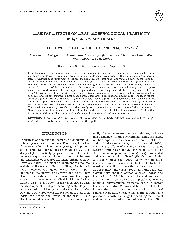摘要
Phenotypic plasticity acts to increase the performance Of plants under stress. Leaf morphological plasticity and its causes in different. environments are incompletely understood. We measured the leaf morphological parameters of Quercus acutissima Carr. seedlings. including leaf size, leaf shape and venation pattern. assessing the effects of different habitat conditions on leaf morphological plasticity. A field study in forest edge and understory was combined with experiments simulating different light and water conditions. Leaf morphology variations Occurred over most of the parameters, and the causes were consistent between the field Study and lab experiment. Leaf size decreased with low supply of light and water. Leaf length and width were only affected by leaf area. The leaf petiole did not lengthen under shade stress. suggesting a trade-off relationship between functional tissues and support structures. Leaf shape became narrower in drought and broader tit (lie shade. as reflected in changes in three leaf fractions. Higher vein density played a part in enhancement of mechanical support and water supply. Leaves with more teeth show more active photosynthesis, but are disadvantageous in xeric environments because of higher transpiration. Light was the main factor inducing leaf morphological plasticity. The variations caused by drought were due mainly to the allometry. Our results showed that the leaves of Q. acutissima seedlings respond to different habitats with phenotypic plasticity of morphology, suggesting that this is an important mechanism for seedlings to adapt to broader ecological amplitudes.
- 出版日期2008
- 单位山东大学
